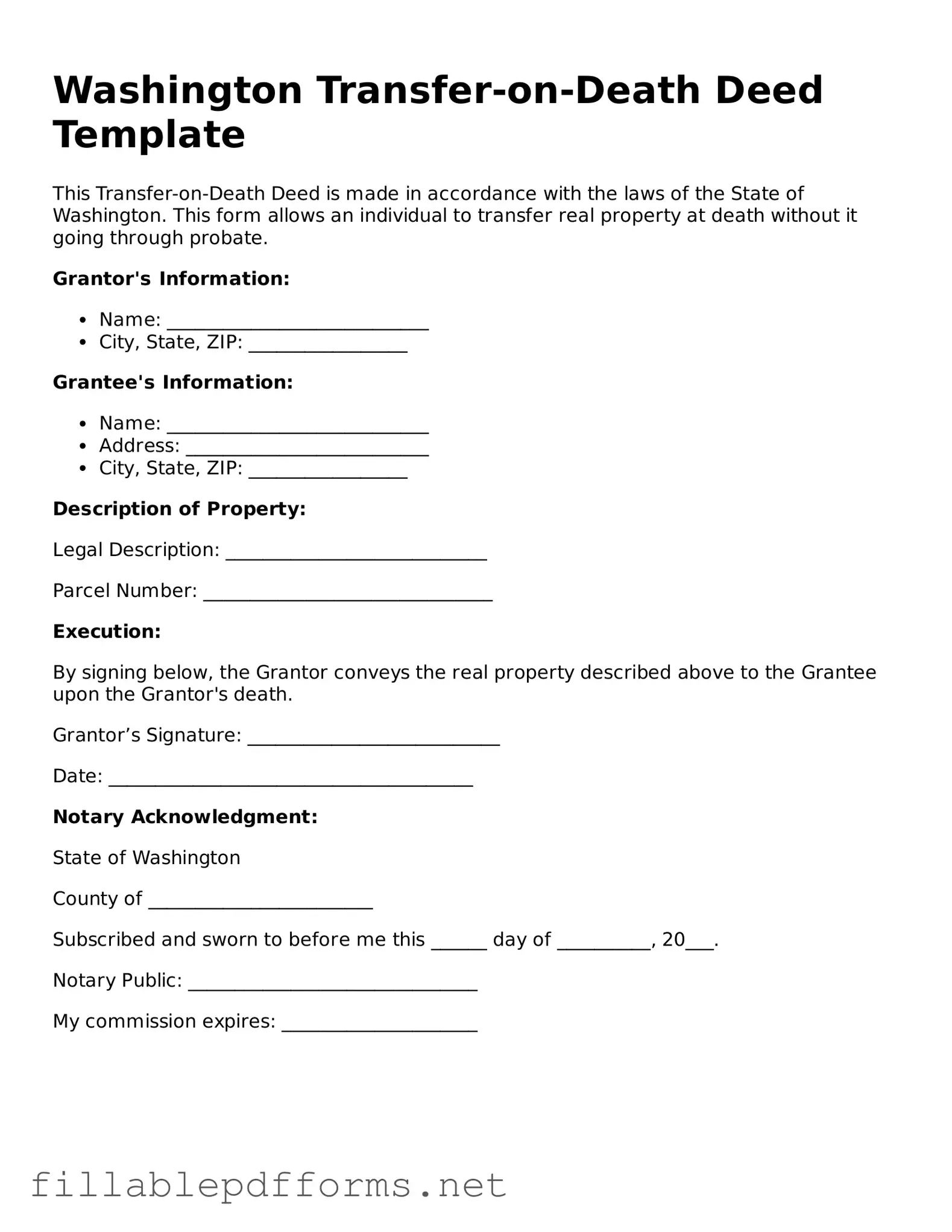Attorney-Verified Transfer-on-Death Deed Form for Washington State
The Washington Transfer-on-Death Deed is a legal document that allows property owners to designate a beneficiary who will receive their real estate upon their death, bypassing the probate process. This deed provides a straightforward way to transfer property, ensuring that your wishes are honored without the complications of court involvement. Understanding this form can help individuals make informed decisions about their estate planning.
Launch Editor Here
